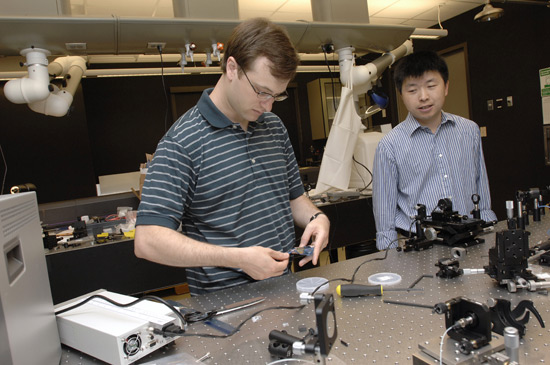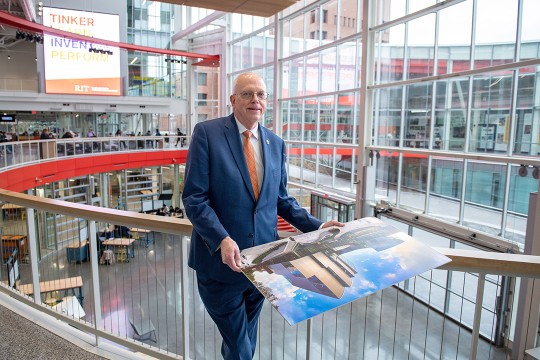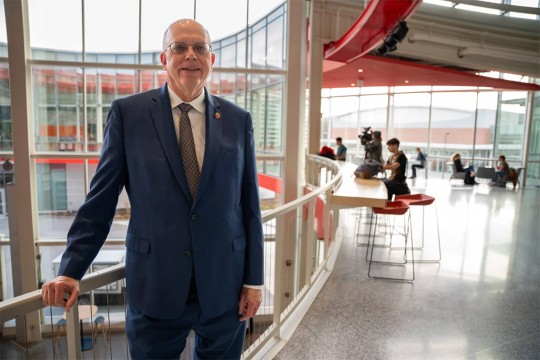Research team hopes to shift photonics technologies to widespread use
A. Sue Weisler | photographer
Stefan Preble, left, and Zhaolin Lu, assistant professors of microsystems engineering, prepare an experiment related to their research in silicon photonic devices.
Photonics, the study and application of electromagnetic energy through the manipulation of light, has been utilized to develop some of our most important technologies, including fiber-optic telecommunications, optical data recording and lasers. Researchers at RIT are currently attempting to advance the use of photonics applications and revolutionize semiconductor electronics through the study and improvement of silicon photonics.
“Traditional semiconductor electronics involves the manipulation of electrons over a copper wire. In silicon photonics these components are replaced with photons and optic fiber which allow for faster and more efficient communication and greater memory capacity,” notes Mustafa Abushagur, director of RIT’s microsystems engineering program and leader of the research project. “The technology has the potential to greatly improve electronic and computer technology, while opening up numerous opportunities in the areas of chemical synthesis, medical diagnostics and alternative-energy development.” Because of the similarities between silicon photonics and traditional electronics, the new technology can utilize the same production systems and electronic chips, reducing cost and increasing opportunities for implementation.
Current research in the field is therefore focusing on enhancing the application of optical devices on silicon chips. Abushagur’s team is working to improve the coupling of different optical devices, such as optical fibers, used to transfer information, and waveguides, used to move and manipulate information being transferred. The team is utilizing photonic crystals to enhance the coupling efficiency, which increases the number of optical devices that can be integrated onto one silicon chip. Abushagur believes the nanophotonic couplers created through the project will improve overall performance and enhance opportunities for widespread commercialization of the technology.
“The enhanced application of silicon photonics is dependant in part on improving the integration of photonic processes with silicon semiconductors,” notes Abushagur. “It is our hope that this research will improve the creation of useable and affordable silicon phonic devices in the future.”
Abushagur’s team includes Stefan Preble and Zhaolin Lu, both assistant professors of microsystems engineering, and Rami Wahsheh, a doctoral candidate in the microsystems engineering program. Experiments are being conducted utilizing equipment in RIT’s Semiconductor and Microsystems Fabrication Laboratory and the NanoScale Science & Technology Facility at Cornell University.















